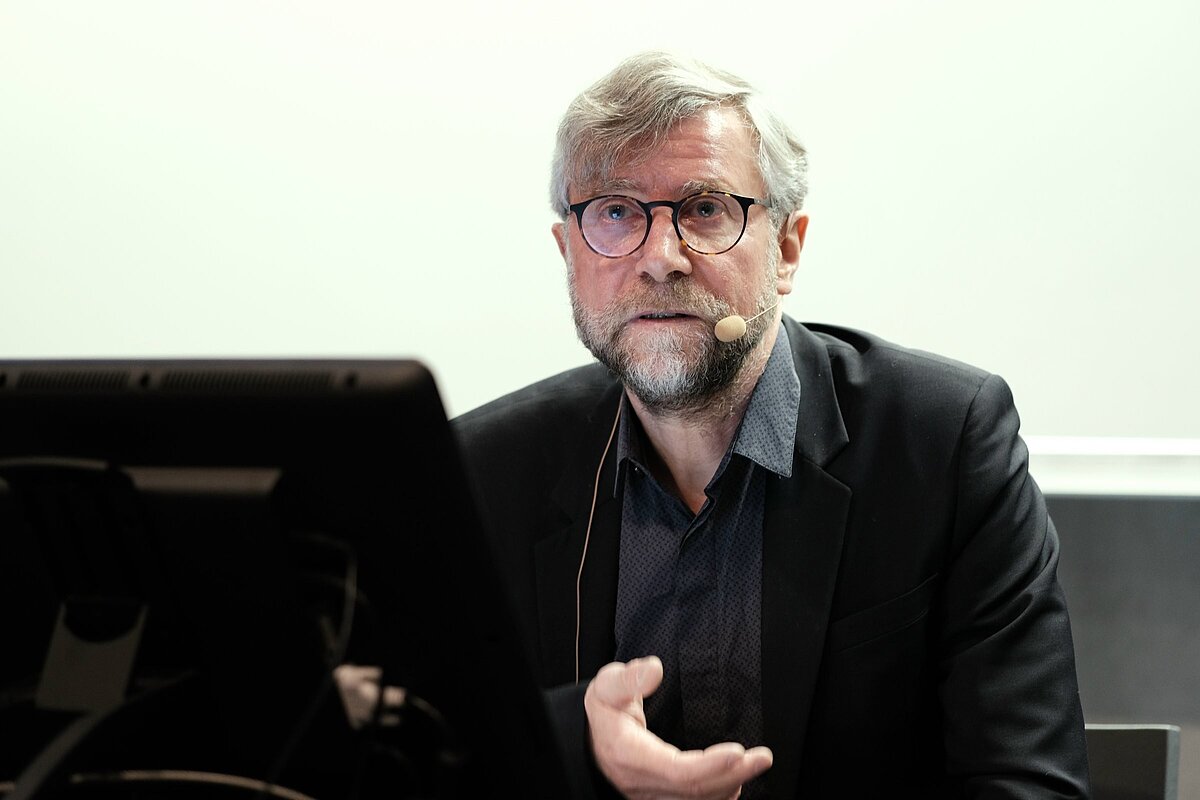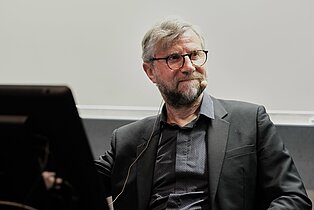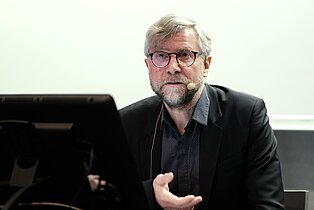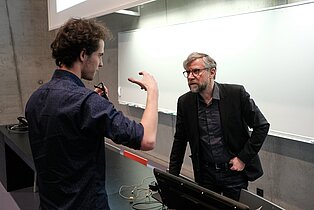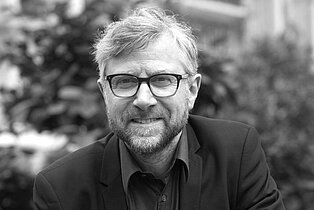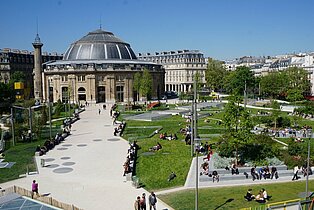Review | Jean-Marc Fritz in Prague
The second evening in the Prague lecture series “Transformations: Changing Boundaries of Professions in a Changing World” was assigned to the French architect and urban planner Jean-Marc Fritz, a partner in the studio SEURA, which designed and coordinated the transformation of the crucial commercial and transport nexus in Paris, Les Halles. In his lecture, he discussed not only the history of this site, the location of Emil Zola’s novel « The Belly of Paris », but also the concept and his own design. At the same time, he stressed certain hazards in working with such important urban spaces.
Jean-Marc Fritz devotes his talents to the creation of public spaces, e.g. the nearly two-km-long Boulevard Richard-Lenoir in Paris or the Esplanade Chapeau Rouge in Bordeaux. Regarding his most important realisation in his previous career, the planning of Les Halles, he and his two collaborators published a book in 2008.
Known simply as ‘Les Halles de Paris’, the area once held the largest marketplace in the French capitol. In medieval times, it originally lay on the city’s outskirts. In the 19th century, during the ‘Hausmannisation’ of Paris, it was radically rebuilt. The result was twelve pavilions of cast-iron and glass, designed by architect Victor Baltard. Each pavilion served for the sale of different commodities, and together they gave the site its current name.
The Citizens of Paris ‘Divorce’ the City Government
Almost a century later, by 1970, the market of Les Halles lay at the very centre of the French metropole. By now, though, it served primarily for wholesale trade and its supplying led to major traffic jams. Moreover, the centre of Paris had for several decades been losing population; the buildings were decaying and several localities approaching slum conditions. The city centre urgently needed a new impulse. Hence the municipal authorities decided in favour of a radical change: to construct in place of the market a new transport and commercial nexus that would link Paris’s suburbs to the centre and increase the quality of life in the vicinity.
The markets were relocated to the suburbs of Rungis and La Villette, and Baltard’s halls were demolished. Before demolition, though, the empty halls were used for a wide variety of cultural or public aims, from the installation of a ski slope to the staging of theatre performances. And the Parisians came to like the halls and fought to save them. Buildings of the 19th century, though, still lacked any heritage protection, and the idea of converting the extant halls for a completely different function was still relatively unknown. Protests and petitions from the public had no effect on the city, and in 1971 the halls were torn down.
The important position of the Les Halles locality, in the centre of Paris as well as the wider Ile-de-France region, attracted attention from leading politicians (presidents Charles de Gaulle and Georges Pompidou) as well as Paris’s then mayor Jacques Chirac to intervene in the project and change its direction. From the original inspiration, the ‘Plan Voisin of Le Corbusier, the Parisian authorities moved toward the ideas of Edouard Utudijan, who proposed the positioning of shops, services and in particular transit below ground.
“While nobody liked it, everybody went there”
Public controversies and significant changes during the design process were reflected in the resulting built form. Though the new transport hub significantly shortened travel times and increased convenience, the site was not popular among Parisians themselves. The forum created above the metro and rail station became the second largest shopping centre in the city. Yet its profitability remained overwhelmingly dependent on the transfer station: during public transport strikes, a usual occurrence in France, the shops were left nearly deserted.
The layout of the transit hall was very complicated, and passengers unfamiliar with the system often got lost. Nor did the colour scheme to tell the different directions apart help. The low ceiling height and insufficient daylight made the space seem oppressive. The schizophrenic attitude of Paris towards Les Halles could be summarised, in the lecturer’s phrase: “While nobody liked it, everybody went there.” This project was regarded as an error; meanwhile, the structures rapidly aged and grew decrepit.
It was an extremely simple urban project!
A change was brought about with the election of a new Paris mayor, Bertrand Delanoë, in 2001, who forcefully accentuated the question of Les Halles and highlighted the needs for a new reconstruction. The passenger capacity was no longer sufficient, public safety required improvement, and most notably, its image did not reflect the prominent position and significance of the heart of Paris and the surrounding region.
Mayor Delanoë took instruction from the errors of the past and worked to ensure good information to the public as well as a unified conception for the entire project. The open competition attracted entries from major architectural names such as OMA, MVRDV or Jean Nouvel. The winner of the competition, announced in 2004, was the atelier SEURA.
For Jean-Marc Fritz and his colleagues, though, they were now faced with many difficult questions. Most importantly: should they demolish everything and start from zero, or merely transform the extant arrangements? The answer was provided by the site itself: it was required that during the entire process the transport hub and shopping centre should remain in operation. As such, the authors decided to remove all above-ground pavilions but to transplant a new face onto the extant ‘underground world’ from the 1970s.
The goal was to create a “meadow” in the centre of the pulsating city. This spacious park stretches between the main built landmarks and sets them off to good effect: the Church of St-Eustache, the Stock Exchange and the Centre Pompidou. Indeed, the axis La Bourse-Centre Pompidou emerged as the park’s central promenade. Connecting the park, which rapidly won approval from the public, and the transport nexus below is an entrance patio, covered by a ‘flying canopy’ by the architects Patrick Berger and Jacques Anziutti. Jean-Marc Fritz summarised the concept modestly: “It was an extremely simple urbanistic project!”
The primary idea of the reconstruction of the terminal and shopping centre was to bring natural light into the underground spaces, as well as allowing shoppers and passengers intuitive orientation and movability in the space. The authors managed to reduce the space for private cars and offer it to people.
One major challenge was the demanding construction of the park, entirely built atop the concrete slab covering the below-ground station. Thanks to the selected materials (e.g. lightened modules with a structure resembling a honeycomb) and particularly thanks to the definition of the best sites, we can even find trees growing in the park. Greatest of all complications, though, was the length of the project. Jean-Marc Fritz told his listeners that they had expected a length of around five years, but it lasted fifteen! Realisation of the project was completed in 2018.
Praha, 19 November 2019
Ing. arch. Karolína Kripnerová
Interview-Video
Jean-Marc Fritz spoke about his lecture at the November Talks in Prague.


